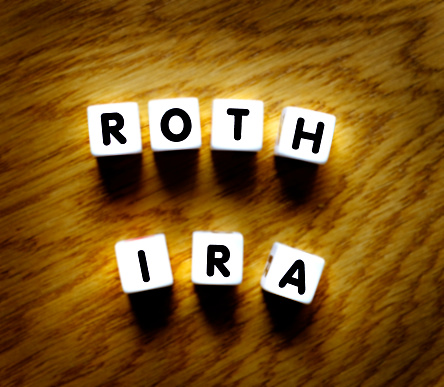Introducing IRA
Our Retirement plans exist so you don't have to worry about your future
Get started Learn more
Our Retirement plans exist so you don't have to worry about your future
Get started Learn more
Americans are often way behind when it comes to retirement planning. In 2019, almost half of households headed by someone 55 or older had no retirement savings at all, according to the U.S. Government Accountability Office.
Many people won't have enough money to live comfortably and will rely solely on Social Security to pay for their living expenses. But retirement doesn't have to look this way for you.
Here's everything you need to know about the best types of retirement plans available and how to decide which one is best for you.
Anyone who earns taxable income can open a traditional IRA with us. If you don't have a retirement plan through work, the contributions you make to a traditional IRA are usually tax-deductible. Contributions to a traditional IRA may be invested in a range of different assets, like mutual funds and ETFs, and the investment earnings are tax-deferred. Once you start making withdrawals after age 59 ½, your IRA distributions are taxed as ordinary income.
In 2021 and 2022, you can contribute up to $6,000 per year into a Traditional IRA. If you are 50 years of age or older, you can contribute up to $7,000 per year.
Get Started

If your annual income isn't too high, a Roth IRA is one of the best retirement accounts available. While your Roth IRA contributions aren’t tax-deductible today, you don’t have to pay income taxes on the withdrawals you make once you retire. Plus, you can take out the money you contribute to a Roth IRA before retirement without paying a penalty, so a Roth IRA can also double as an emergency fund in a bind.
The total annual Roth IRA contribution limits are the same as for a traditional IRA, although there are income thresholds that limit who may contribute directly to a Roth IRA. You may only contribute directly to a Roth IRA in tax year 2021 if you earn less than $140,000 or less than $208,000 if you’re married and file a joint tax return. For tax year 2021, these income thresholds rise to $144,000 for individuals and $214,000 for married couples.
Get StartedA spousal IRA isn't really a special type of individual retirement account. Rather, it's a strategy married couples can use to maximize their retirement savings using an IRA.
If you're married and you or your spouse doesn't work or earns significantly less than the other, a spousal IRA allows you to save more for retirement. The non-working spouse can open up a traditional or Roth IRA in their own name and make contributions based on their household income. Ordinarily, you are limited to contributing the amount you, not your household, earns in a year.
Being able to open another IRA—and max out the account with contributions—allows some married couples to double their IRA retirement savings each year.
Get Started

An annuity is a type of insurance contract that can supplement your retirement savings. There are many forms of annuities to choose from, but we believe that fixed annuities are your best choice.
Fixed annuities are easier to understand and compare to one another than some different kinds of annuity contracts, like indexed or variable annuities. Fixed annuities generally have predictable benefits, tax-deferred growth and, in some cases, a death benefit that can be paid out to a beneficiary if you pass away.
And, unlike other retirement plans, annuities aren’t subject to IRS contribution limits, so you can invest as much as you want for your future.
Start with Us